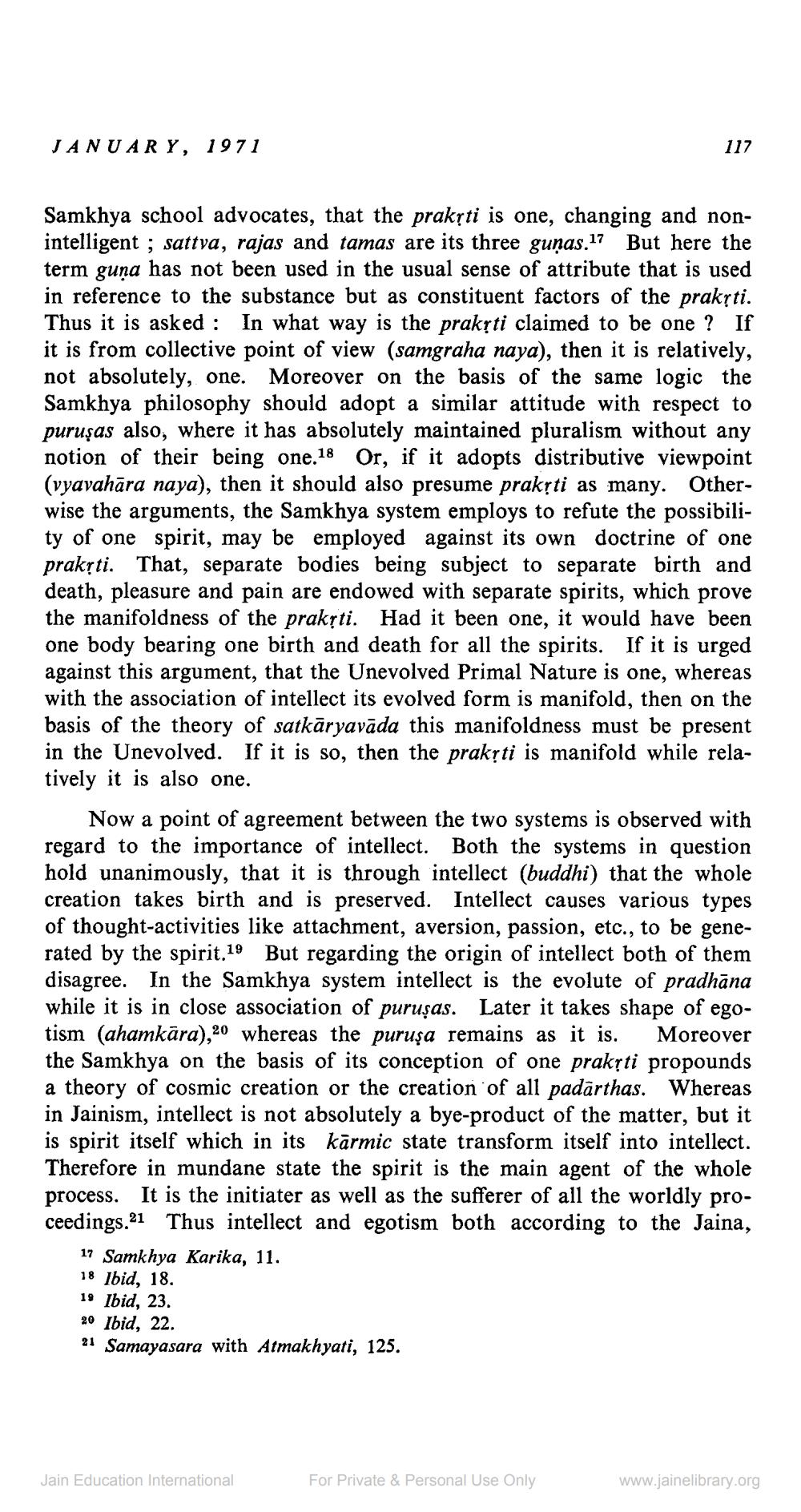________________
JANUARY, 1971
Samkhya school advocates, that the prakṛti is one, changing and nonintelligent; sattva, rajas and tamas are its three gunas.17 But here the term guna has not been used in the usual sense of attribute that is used in reference to the substance but as constituent factors of the prakṛti. Thus it is asked: In what way is the prakṛti claimed to be one? If it is from collective point of view (samgraha naya), then it is relatively, not absolutely, one. Moreover on the basis of the same logic the Samkhya philosophy should adopt a similar attitude with respect to purusas also, where it has absolutely maintained pluralism without any notion of their being one.18 Or, if it adopts distributive viewpoint (vyavahāra naya), then it should also presume prakṛti as many. Otherwise the arguments, the Samkhya system employs to refute the possibility of one spirit, may be employed against its own doctrine of one prakṛti. That, separate bodies being subject to separate birth and death, pleasure and pain are endowed with separate spirits, which prove the manifoldness of the prakṛti. Had it been one, it would have been one body bearing one birth and death for all the spirits. If it is urged against this argument, that the Unevolved Primal Nature is one, whereas with the association of intellect its evolved form is manifold, then on the basis of the theory of satkāryavāda this manifoldness must be present in the Unevolved. If it is so, then the prakṛti is manifold while relatively it is also one.
Now a point of agreement between the two systems is observed with regard to the importance of intellect. Both the systems in question hold unanimously, that it is through intellect (buddhi) that the whole creation takes birth and is preserved. Intellect causes various types of thought-activities like attachment, aversion, passion, etc., to be generated by the spirit.19 But regarding the origin of intellect both of them disagree. In the Samkhya system intellect is the evolute of pradhana while it is in close association of purusas. Later it takes shape of egotism (ahamkara),20 whereas the puruşa remains as it is. Moreover the Samkhya on the basis of its conception of one prakṛti propounds a theory of cosmic creation or the creation of all padarthas. Whereas in Jainism, intellect is not absolutely a bye-product of the matter, but it is spirit itself which in its karmic state transform itself into intellect. Therefore in mundane state the spirit is the main agent of the whole process. It is the initiater as well as the sufferer of all the worldly proceedings.21 Thus intellect and egotism both according to the Jaina,
17 Samkhya Karika, 11.
18 Ibid, 18.
19 Ibid, 23.
20 Ibid, 22.
21 Samayasara with Atmakhyati, 125.
117
Jain Education International
For Private & Personal Use Only
www.jainelibrary.org




